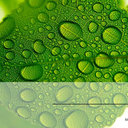High-yield anthocyanin biosynthesis in engineered Escherichia coli.
Palavras-chave
Resumo
Anthocyanins are red, purple, or blue plant water-soluble pigments. In the past two decades, anthocyanins have received extensive studies for their anti-oxidative, anti-inflammatory, anti-cancer, anti-obesity, anti-diabetic, and cardioprotective properties. In the present study, anthocyanin biosynthetic enzymes from different plant species were characterized and employed for pathway construction leading from inexpensive precursors such as flavanones and flavan-3-ols to anthocyanins in Escherichia coli. The recombinant E. coli cells successfully achieved milligram level production of two anthocyanins, pelargonidin 3-O-glucoside (0.98 mg/L) and cyanidin 3-O-gluside (2.07 mg/L) from their respective flavanone precursors naringenin and eriodictyol. Cyanidin 3-O-glucoside was produced at even higher yields (16.1 mg/L) from its flavan-3-ol, (+)-catechin precursor. Further studies demonstrated that availability of the glucosyl donor, UDP-glucose, was the key metabolic limitation, while product instability at normal pH was also identified as a barrier for production improvement. Therefore, various optimization strategies were employed for enhancing the homogenous synthesis of UDP-glucose in the host cells while at the same time stabilizing the final anthocyanin product. Such optimizations included culture medium pH adjustment, the creation of fusion proteins and the rational manipulation of E. coli metabolic network for improving the intracellular UDP-glucose metabolic pool. As a result, production of pelargonidin 3-O-glucoside at 78.9 mg/L and cyanidin 3-O-glucoside at 70.7 mg/L was achieved from their precursor flavan-3-ols without supplementation with extracellular UDP-glucose. These results demonstrate the efficient production of the core anthocyanins for the first time and open the possibility for their commercialization for pharmaceutical and nutraceutical applications.


